6 Uses for Honeysuckle Flowers
Learn how to use honeysuckle flowers to make tea, tincture, salve, jelly, and more!
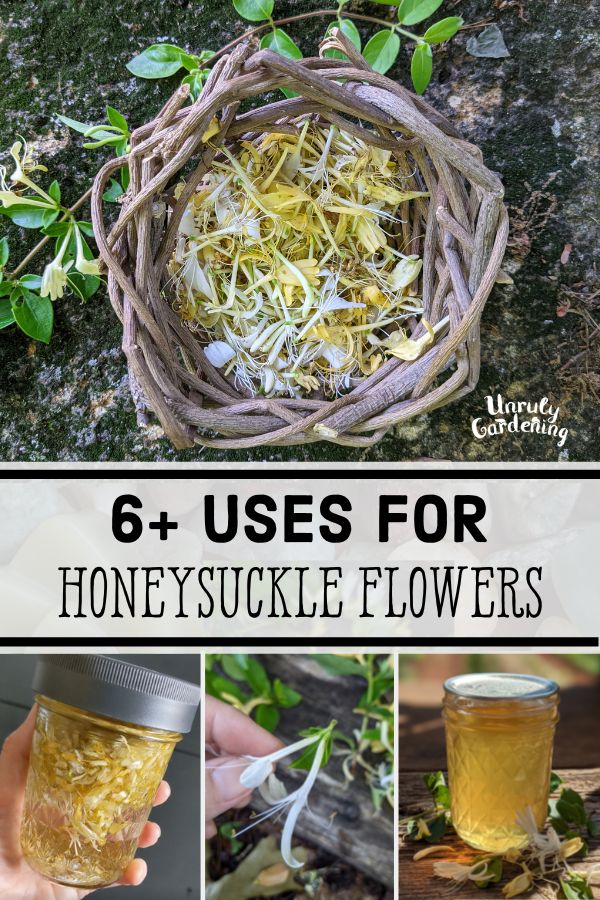
Benefits of Honeysuckle
Japanese honeysuckle has been well studied for its ability to help the body clear viruses. It’s cooling, making it useful for hot, inflamed, and swollen conditions like sore throat and colds/flu. In Chinese medicine, the unopened flower buds of honeysuckle is favored, but you can use the fully open flowers as well for any of the following recipes.
It’s not just for internal use – honeysuckle is also helpful when used on your skin to soothe and cool inflamed conditions. (See the section on making tea below for more details.)
If you’re not familiar with gathering honeysuckle, check out our article:
for lots of photos and ID tips.
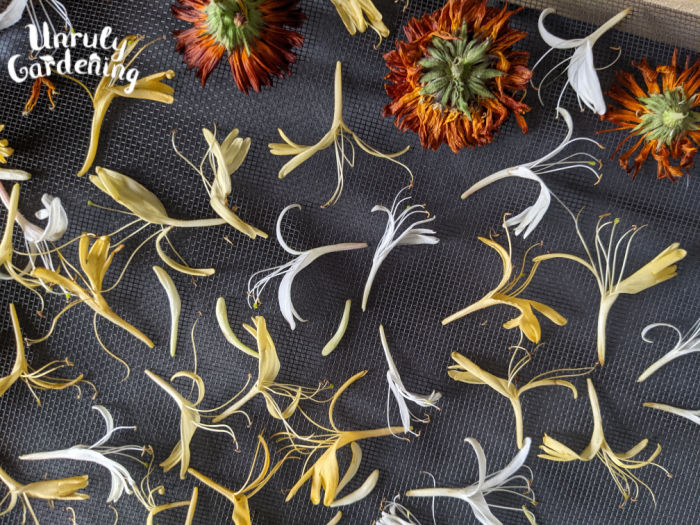
How to Dry Honeysuckle
While fresh is best, the flowers are only around for a short time, so they can be dried for use during other times of the year – notably for tea, or infused oils.
Spread the fresh blooms in a single layer over a drying screen, paper towels, or clean dish towel. Allow to dry in the open air, out of direct sunlight (though some herbalists prefer to dry IN sunlight), for a few days until completely dry. Store in a brown paper bag or glass jar in a cool dark spot for about one year.
1. Honeysuckle Tea
You can drink the tea as is, or use it as a mouthwash or gargle for sore throat or blisters in your mouth. The cooled tea also works well for itchy skin from poison oak/ivy rashes.
How to make honeysuckle tea:
Dried Honeysuckle Tea:
Place 1 to 2 tablespoons of dried honeysuckle flowers in a cup. Cover with 8 ounces of hot water. (The water doesn’t have to boil, just heat to a simmer.) Place a saucer over the cup top and steep for 10 minutes. Strain and sweeten to taste.
Fresh Honeysuckle Tea:
Place about 1/2 cup fresh flowers in a heatproof cup. Pour 1 cup simmering hot water over the flowers. Cover with a saucer to prevent the aromatic fumes from escaping and allow to steep for around 10 minutes. Strain the flowers from the liquid and sweeten the tea to taste.
For a stronger tea, steep for a longer time, or add more flowers. Unused tea can be stored in your refrigerator for 24 to 48 hours, or frozen in ice trays for longer storage.
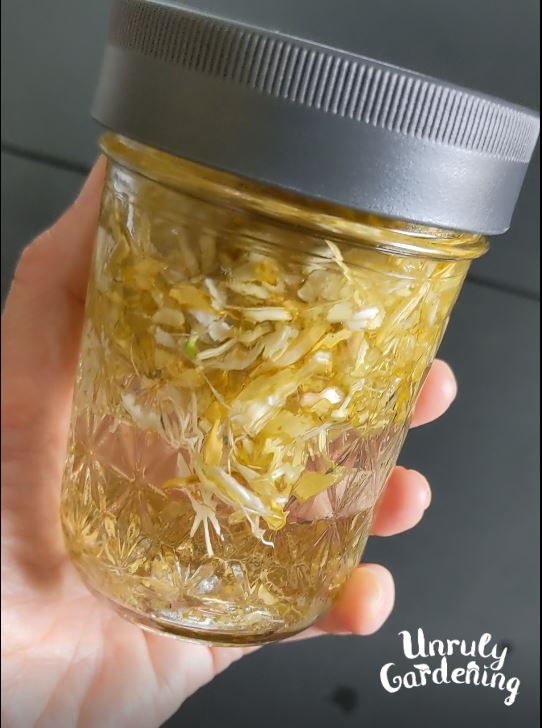
2. Honeysuckle Tincture
Tincture made with Japanese honeysuckle is a must-have for our natural remedies cabinet. We often combine the fresh flowers with an equal part of chopped lemon balm for a double punch against colds and viruses.
To make honeysuckle tincture:
Fill a half-pint jar about half way with fresh honeysuckle flowers (mixed with lemon balm leaves, if you’d like) that have been coarsely chopped into smaller pieces. It’s okay if the little green ends are still on the honeysuckle.
Pour vodka (100 proof is preferred) into the jar until it’s almost filled. Stir and secure with a lid. Label. Store in a cabinet and shake every few days or as often as you remember to. Let the mixture infuse for 4 to 6 weeks before straining. Tincture has a long shelf life of at least one to two years.
To use: Mix anywhere from a few drops to a full dropperful with a spoonful of honey, or mix it into your favorite tea, ginger ale, or beverage of choice. Tincture can also be used in DIY herbal throat sprays.
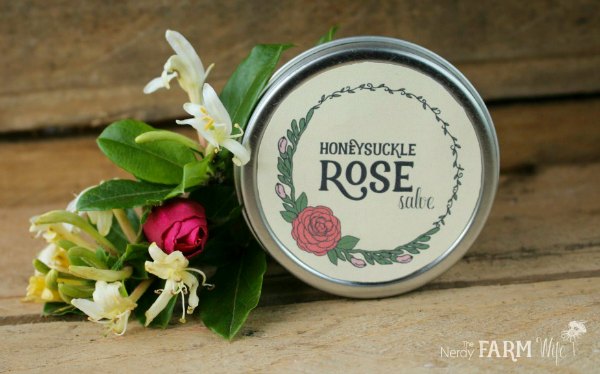
3. Honeysuckle Oil Infusion & Salve
Used topically, honeysuckle is useful for soothing chapped or irritated skin. It can be infused into oil and used to make lip balm, salve, lotion, soaps, body butters, and more.
To make the infused oil, fill a half-pint jar halfway with dried honeysuckle flowers, then add your favorite oil. Olive or sunflower oil are classic choices, but for a lighter less greasy feel, you could try rice bran oil, apricot kernel oil, or jojoba oil. Cap and tuck in a cabinet to infuse for 4+ weeks. Strain. Shelf life of infused oil is about 1 year, or as long as the oil smells fresh.
Try this recipe for honeysuckle infused oil and salve at our sister site, The Nerdy Farm Wife (you can easily leave out the rose petals if you’d like!):
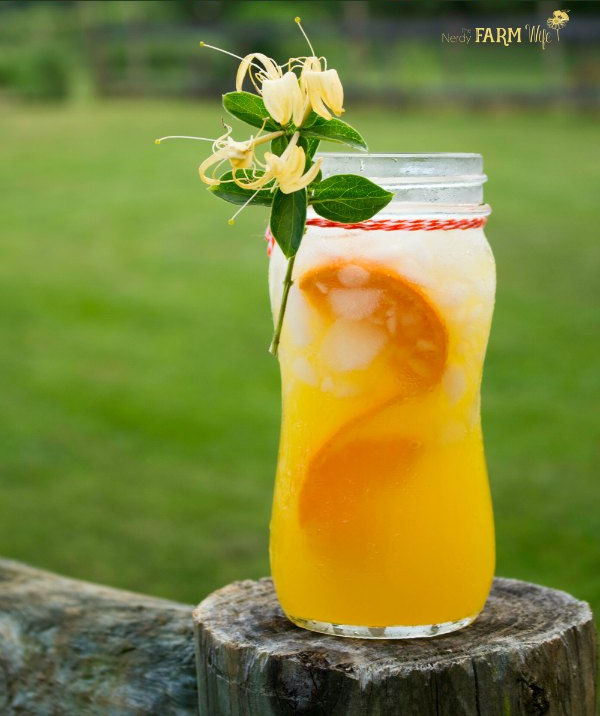
4. Honeysuckle Orangeade
Turn your honeysuckle tea into a refreshing, cooling summer beverage that the whole family can enjoy!
Orangeade is a naturally sweeter version of lemonade. To make it, you’ll need:
- honeysuckle tea
- oranges
- a lemon
- honey (or other sweetener of choice)
Find the full directions:
Honeysuckle Orangeade (a refreshing herbal summer drink)
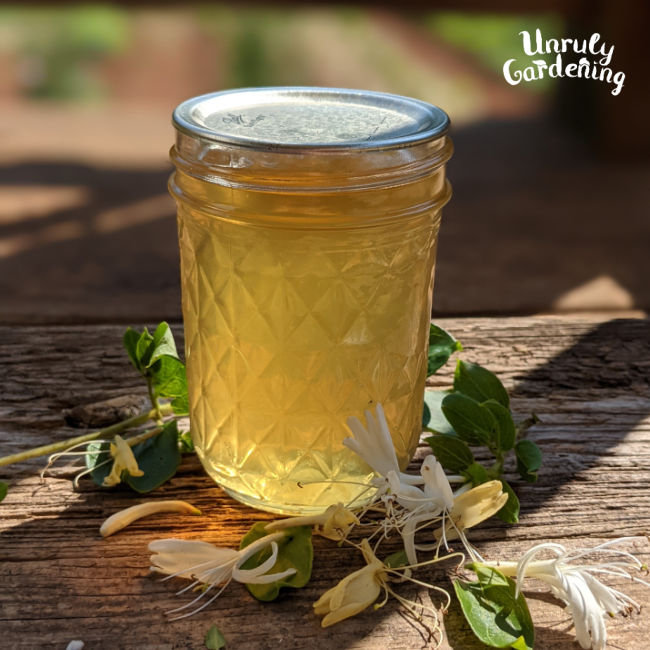
5. Honeysuckle Jelly
Delicious, with the scent and sweet flavor of fresh honeysuckle, we have a recipe we use right here on our site!
6. Honeysuckle Glycerite
This easy remedy is a great non-alcoholic way to enjoy the benefits of honeysuckle year ’round.
Hope over to Homespun Seasonal Living for the full recipe!
How to Make Honeysuckle Glycerite
References & Further Reading
Allan, Bryan F. Invasive honeysuckle eradication reduces tick-borne disease risk by altering host dynamics. Proceedings of the National Academy of Science U.S.A. 2010 Oct 26; 107(43): 18523–18527.
Chevallier, Andrew. Encyclopedia of Herbal Medicine. 2016. Penguin Random House, New York, NY.
Du, Xu-Qin, et al. Add-On Effect of Honeysuckle in the Treatment of Cor.ona.virus Disease 2019: A Systematic Review and Meta-Analysis. Frontiers in Pharmacology. 15 September 2021 doi: 10.3389/fphar.2021.708636
Li, Mengwei, et al. Inhibitory Activity of Honeysuckle Extracts against Influenza A Virus In Vitro and In Vivo. Virologica Sinica. 2021 Jun;36(3):490-500. doi: 10.1007/s12250-020-00302-6. Epub 2020 Oct 12.
Scott, Timothy Lee. Invasive Plant Medicine. 2010. Healing Arts Press, Rochester, VT.
USDA. An Assessment of Japanese Honeysuckle in Northern U.S. Forests; Research Note NRS-202. Online PDF accessed June, 2022.
Our articles are for information and idea-sharing only. While we aim for 100% accuracy, it is solely up to the reader to provide proper identification. Be sure to seek out local foraging classes and plant walks, and invest in mushroom and foraging guides suitable for the area you live in, since some wild foods are poisonous, or may have adverse effect.

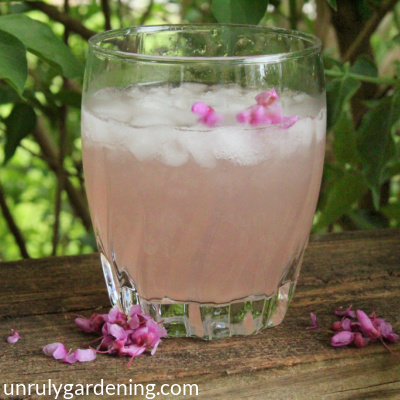
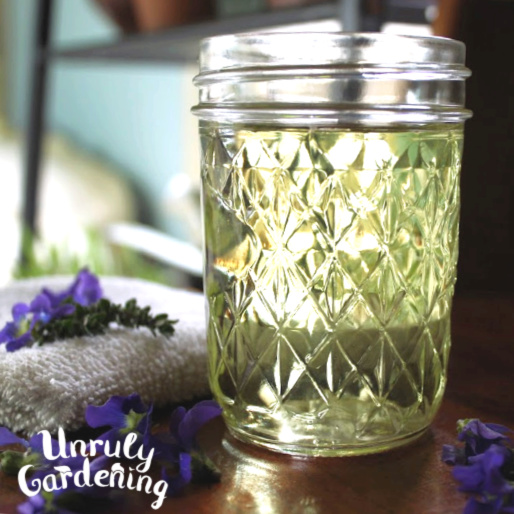
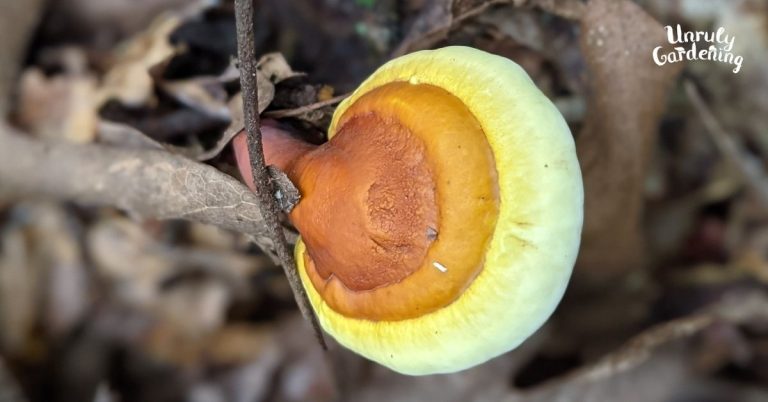
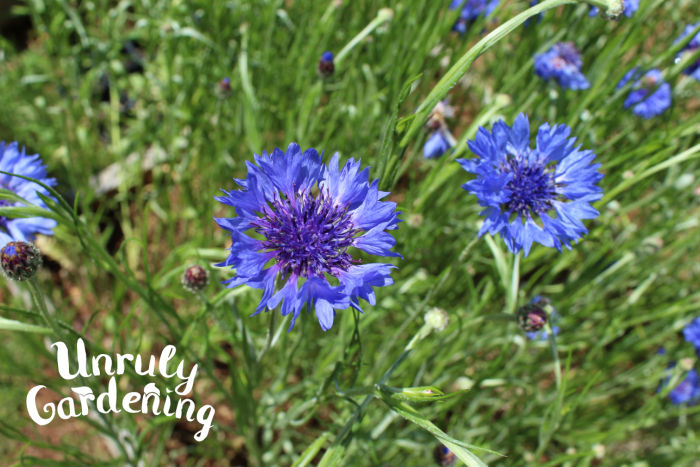
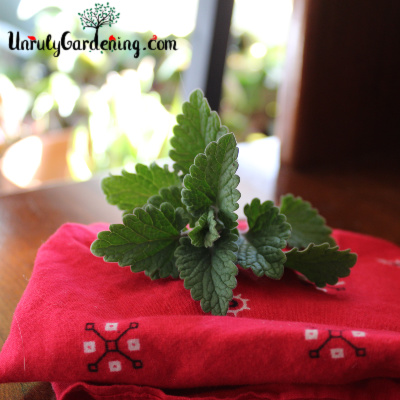
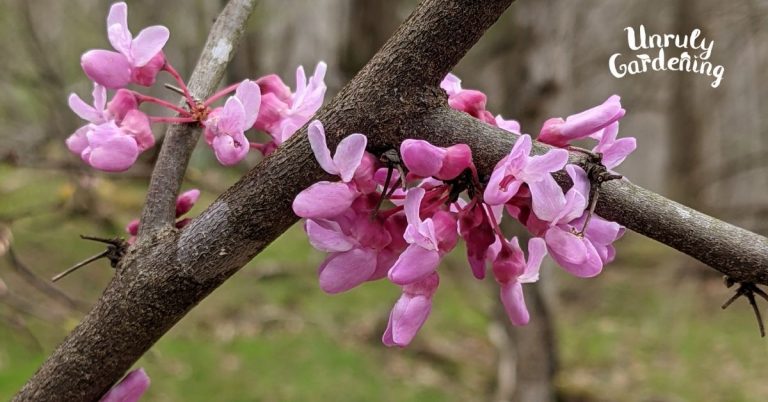
Hello.
Our honeysuckle is in full blossom here in Canada! I have picked and dried plenty of it for later use and made the most beautiful wild rose and honeysuckle CP soap last year! so lovely and will make more later with our wild roses (they are also in bloom) . I never thought to make tea ut it sure sounds lovely so will try it!
Thank you for your many recipes.
Yvonne
Hi Yvonne, Wild rose and honeysuckle soap sounds amazing! So happy you like the recipes! ❤
Thank you for this informative article! We grow Honeysuckle but they are a pink/orange/yellow color. Do they have the same benefits as Japanese? Thanks so much!
Hi Lisa, That sounds like a beautiful honeysuckle with all of those colors!
I think Japanese honeysuckle has been most studied, so much of the data is about that kind.
I’m not sure about all of the types of honeysuckle (there are over 100 types out there) – do you happen to know the name of the variety that you have?
You may be able to use the PictureThis Plant Identification app to get a ballpark idea of its name and then research from there to verify.
Or if you have a local plant nursery, take a sprig to them and see if they can ID it.
You might also find some info at this article from Eat the Weeds: https://www.eattheweeds.com/honeysuckle-heaven-2/